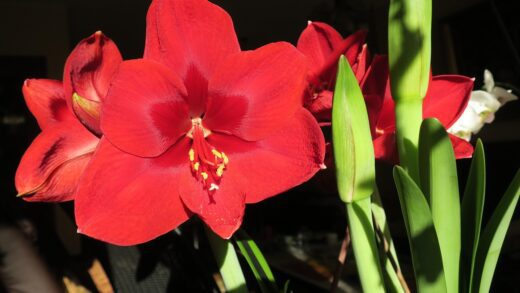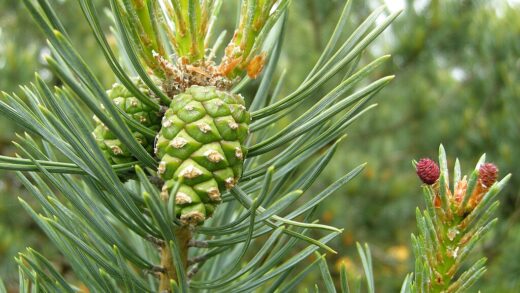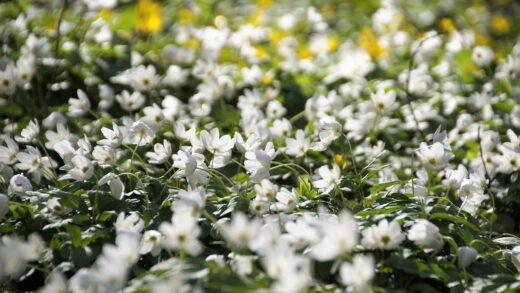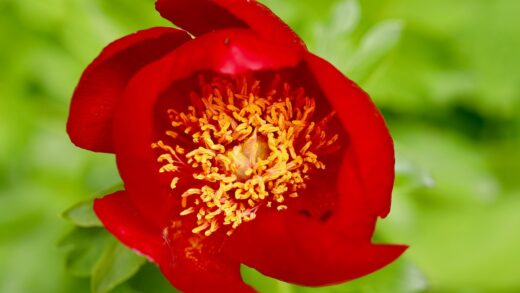Understanding the specific water requirements of the lemon-scented geranium is fundamental to its cultivation, as this is the area where many gardeners encounter difficulties. This plant has a distinct preference for a ‘drought and flood’ cycle, meaning it thrives when the soil is allowed to dry out significantly between thorough waterings. The most common mistake is overwatering, which creates an anaerobic soil environment and inevitably leads to root rot, a condition from which the plant rarely recovers. Therefore, mastering the art of irrigation for this particular Pelargonium involves patience and observation, rather than adhering to a rigid schedule.
The key to successful watering is to assess the plant’s needs on an individual basis, as factors like pot size, soil type, temperature, and light exposure all influence how quickly the soil dries. A plant in a small terracotta pot in full sun will require water far more frequently than a large plant in a plastic container situated in partial shade. Learning to gauge soil moisture by touch is a far more reliable method than watering every few days by rote. The goal is to provide deep, infrequent soakings that encourage a strong, extensive root system.
When you do water, it should be done thoroughly and decisively. A light sprinkling on the soil surface is insufficient as it only moistens the top layer, encouraging shallow root growth and leaving the deeper roots dry. A proper watering involves saturating the entire root ball until water is seen escaping from the drainage holes of the pot. This ensures that all parts of the root system have access to moisture and also helps to flush out any accumulated mineral salts from the soil, which can build up over time from fertilizers and tap water.
Ultimately, the plant itself will provide cues as to its water needs. A slight drooping of the leaves can be an indicator of thirst, though it’s important to confirm this by checking the soil, as wilting can also be a symptom of overwatering and root rot. By developing a habit of checking the soil before reaching for the watering can, you will create a watering regimen that is perfectly attuned to the specific needs of your lemon-scented geranium, setting it up for a long and healthy life.
The principle of deep and infrequent watering
The most successful irrigation strategy for the lemon-scented geranium is centered on the principle of watering deeply but infrequently. This method closely mimics the conditions these plants would experience in their native habitat, where they are adapted to periods of dryness followed by significant rainfall. By allowing the soil to dry out considerably between waterings, you encourage the roots to grow deeper and more extensively in search of moisture. This creates a more robust and resilient root system, which in turn supports a healthier and more drought-tolerant plant overall.
More articles on this topic
Deep watering involves applying enough water at one time to thoroughly saturate the entire volume of soil in the pot or the root zone in a garden bed. For container plants, this means watering slowly and steadily until you see a good amount of water flowing out of the drainage holes. This ensures that the entire root ball, from top to bottom, has been moistened. This practice also serves the important function of flushing out excess fertilizer salts that can accumulate in the soil and potentially burn the plant’s roots.
The ‘infrequent’ aspect of this principle is just as crucial. After a deep watering, you must wait for the top several centimeters of the soil to become completely dry to the touch before even considering watering again. For many indoor or container-grown plants, this could mean watering as infrequently as once a week or even less, depending on the ambient conditions. This drying-out period is vital for allowing oxygen to penetrate the soil and reach the roots, preventing the suffocating, waterlogged conditions that lead to root rot.
Adhering to this principle requires a shift away from a fixed watering schedule. Instead of watering every Saturday, for example, you must develop the habit of physically checking the soil. The simple act of inserting your finger about two to three centimeters into the potting mix is the most reliable way to gauge its moisture level. If it feels damp, wait longer; if it feels dry, it is time to water thoroughly. This responsive approach is the cornerstone of proper irrigation for the lemon-scented geranium.
Factors influencing water needs
The water requirements of a lemon-scented geranium are not static; they are dynamic and influenced by a multitude of environmental and situational factors. One of the most significant variables is the type and size of the container. Plants in porous terracotta pots will dry out much faster than those in non-porous plastic or glazed containers because moisture evaporates through the clay walls. Similarly, a plant in a small pot has a limited soil volume that will dry out more quickly than the extensive soil in a large container.
More articles on this topic
The prevailing climate and weather conditions play a massive role in determining watering frequency. During hot, dry, and windy summer weather, transpiration rates increase dramatically, and the plant will use water much more rapidly. In these conditions, you may need to water every few days. Conversely, during cool, cloudy, or humid periods, the plant’s water needs will decrease significantly. During the winter dormancy period, when growth slows to a near standstill, watering should be reduced to a bare minimum, just enough to prevent the roots from completely desiccating.
The type of soil or potting mix is another critical factor. A light, airy, fast-draining mix, which is ideal for geraniums, will not hold water for as long as a heavy, dense soil. The composition of your potting medium directly impacts how often you will need to water. A mix rich in perlite, sand, or grit will require more frequent irrigation than one with a higher proportion of peat moss or compost, which are more retentive of moisture. This is why using the correct soil blend is so important for establishing a balanced watering routine.
Finally, the maturity and growth stage of the plant itself will affect its water consumption. A young, actively growing plant will generally require more consistent moisture to support the development of new leaves and stems. A large, well-established plant has a more extensive root system and can tolerate periods of dryness better. However, a larger plant also has more leaf surface area, leading to higher transpiration, so its overall water usage when actively growing can be substantial. Observation is key to adjusting your watering practices to the plant’s current state.
Techniques for proper irrigation
The method you use to apply water is just as important as the frequency. For the lemon-scented geranium, it is always best to water the soil directly, rather than watering over the top of the foliage. Wetting the leaves, especially in the evening or in conditions of poor air circulation, can make the plant more susceptible to fungal diseases like botrytis and powdery mildew. Using a watering can with a long spout allows you to direct the water precisely to the base of the plant, right onto the soil surface.
When watering container plants, the technique of bottom-watering can be particularly effective. This involves placing the pot in a saucer or tray of water and allowing the soil to absorb moisture from the bottom up through capillary action. Let the plant sit in the water for about 30 minutes to an hour, or until the soil surface feels moist. This method ensures that the entire root ball is thoroughly and evenly hydrated without wetting the foliage. After bottom-watering, it is crucial to empty any remaining water from the saucer to ensure the pot is not left standing in water.
Regardless of the method used, the time of day you water can also make a difference. Watering in the early morning is generally considered ideal. This timing ensures that the plant is well-hydrated before the heat of the day, reducing the risk of wilting and stress. Watering in the morning also allows any moisture that does splash onto the leaves ample time to evaporate in the sunlight, minimizing the risk of fungal growth. Avoid watering in the late evening, as the foliage may remain damp overnight.
It is also important to consider the quality of your water. While most tap water is acceptable, it can sometimes be high in chlorine or mineral salts. Allowing tap water to sit in an open container for 24 hours can help some of the chlorine to dissipate. If your water is particularly hard, you may notice a white, crusty buildup on the soil surface or the pot over time. Periodically flushing the soil by watering heavily until water drains freely for several minutes can help to leach out these excess salts.
Recognizing signs of over and underwatering
Learning to interpret the visual cues your lemon-scented geranium provides is essential for diagnosing watering issues. Overwatering is the more dangerous of the two problems and often presents with symptoms that can be misleading. An overwatered plant may wilt, looking very similar to a thirsty plant, but the leaves will often turn yellow, starting with the lower ones, and may feel soft or mushy. The base of the stem might become brown or black and soft to the touch, which is a clear sign of stem and root rot.
If you suspect overwatering, you must act quickly. First, stop watering immediately and check the soil. If it is soggy, gently remove the plant from its pot to inspect the roots. Healthy roots should be firm and white or light tan; rotted roots will be brown or black, mushy, and may have a foul odor. If root rot is present, you will need to trim away all affected roots with sterile scissors, repot the plant in fresh, dry, well-draining soil, and water it very sparingly until you see signs of new growth.
The signs of underwatering are generally more straightforward. The most common symptom is wilting leaves that feel dry and crisp rather than soft. The lower leaves may turn yellow and then brown before dropping off the plant as it conserves resources. The potting mix will be visibly dry and may have pulled away from the sides of the pot. Growth will be stunted, and the plant will have a generally stressed and lackluster appearance.
Fortunately, a plant that has been underwatered is usually much easier to revive than one that has been overwatered. The solution is simply to give it a thorough, deep watering. For a severely dehydrated container plant, you may need to submerge the entire pot in a bucket of water for about an hour to fully rehydrate the root ball. After a good drink, the plant should perk up within a few hours. Following this, be sure to monitor the soil moisture more closely to prevent it from reaching such a critical state of dryness again.
Adjusting watering for seasonal changes
A successful irrigation strategy must be adaptable and responsive to the changing seasons. The water needs of a lemon-scented geranium in the peak of summer are vastly different from its requirements in the depths of winter. During the spring and summer, the plant is in its active growth phase, characterized by the production of new leaves, stems, and flowers. This period of high metabolic activity, combined with longer daylight hours and warmer temperatures, means the plant will transpire more and require more frequent watering to support its growth.
As the days shorten and temperatures begin to cool in the autumn, the plant’s growth will naturally slow as it prepares for dormancy. This is a critical time to begin tapering off your watering frequency. The soil will take longer to dry out, and providing too much water at this stage can lead to root rot as the plant is not actively using the moisture. Start to extend the interval between waterings, allowing the soil to become drier than you would in the summer before you irrigate again.
During the winter, especially if the plant has been brought indoors to a cool location, its water needs will be at their lowest. The plant is essentially dormant, and its metabolic processes are significantly reduced. Overwatering during winter is one of the most common reasons for losing a geranium. You should water only sparingly, just enough to prevent the soil from becoming completely bone-dry. For many plants in cool conditions, this might mean a small amount of water only once every three to four weeks.
When spring arrives and you notice the first signs of new growth, such as small new leaves or swelling buds, you can begin to gradually increase the frequency and volume of watering. This should be a slow transition, mirroring the plant’s gentle awakening from dormancy. As the days grow longer and warmer, and the rate of growth accelerates, you can incrementally return to your summer watering routine, always being guided by the actual moisture level of the soil rather than a predetermined calendar.


















